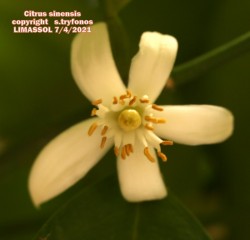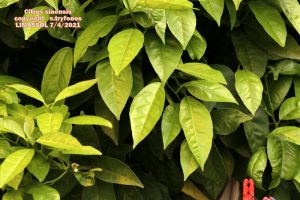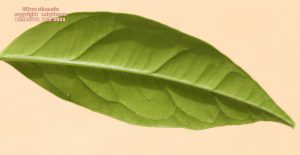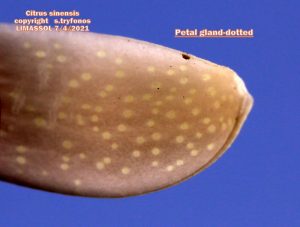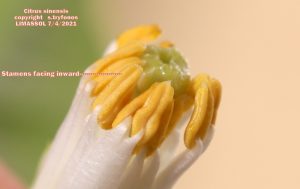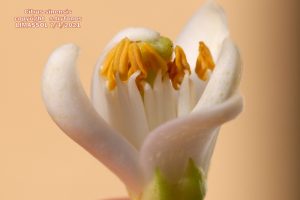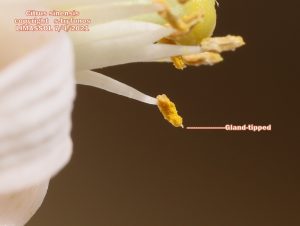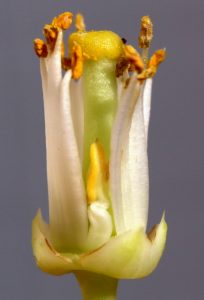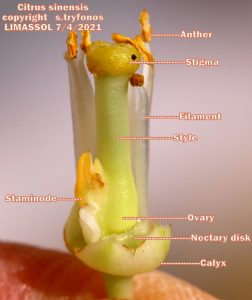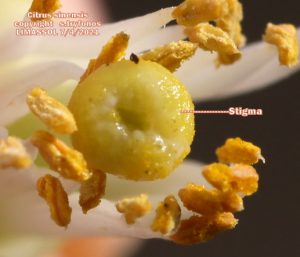Name/Όνομα: Κιτρέα η σινική
Scientific name/Επιστημονικό όνομα: Citrus sinensis (L.) Osbeck.
Common name/Κοινό Όνομα: Navel orange, Orange tree, πορτοκαλιά.
Family/Οικογένεια: RUTACEAE
Description
Plant: Evergreen tree growing up to 6 m high.
Stem/s: Trunk rather short, much-branched, bark ash brown, foliage rounded; young stems may bear spines.
Leaves: Alternate, simple, entire, ovate-elliptic, leathery, dark green, gland-dotted beneath, petiole with small wings.
Flowers: Aromatic, actinomorphic and hermaphrodite, solitary or in few-flowered axillary racemes; calyx cup-shaped, short, green and glabrous, 5-lobed; lobes broadly-triangular, subacute, connected at the base; petals 4-5, oblong-ovate, spreading, free or partially connected, white both sides, gland-dotted; buds are white; stamens ±20, filaments erect, white and glabrous, united in bundles at the base, anthers yellow, introrse*, longitudinally dehiscent, gland-tipped ; ovary superior, orbicular with few segments, sitting on the nectary disk, style 1, erect, thick and glabrous, stigma 1, large, discoid, greenish;
Flowering time: March-April. Fruiting time: November-March.
Fruit: Ovoid berry**, orange or orange-yellow, peel thick, dotted with aromatic oil glands, with 8-10 internal juicy and acid segments; seeds ovoid, ± white and shining or seedless.
Habitat: Cultivated species, gardens, home-yards, parking places, sides of main streets, from 0-600 m alt.
Native: Southeastern Asia ( China, India).
Introrse* = facing inward
Berry** = A fleshy fruit produced from a single ovary, enclosing many seeds (lemon, grapes, tomatoes)


